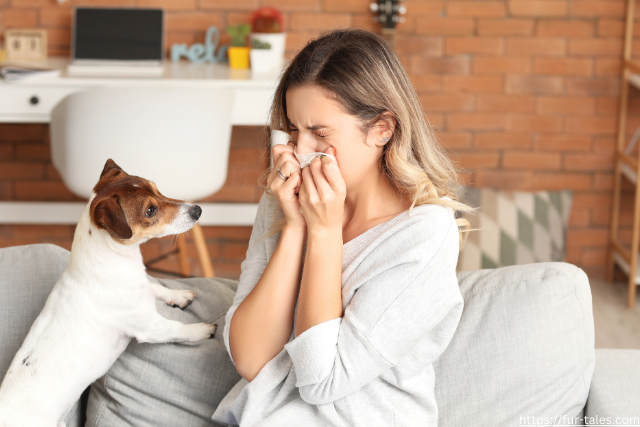
Allergic to Your Cat or Dog? Tips for Relief and Comfort
For many pet lovers, allergies can make life with a cat or dog challenging. Sneezing, itchy eyes, and congestion can feel unbearable, but that doesn’t mean you have to give up your furry friend! With the right strategies, you can manage pet allergies while still enjoying the companionship of your beloved pet.
1. Understand Pet Allergies
Pet allergies are usually caused by dander (tiny skin flakes), saliva, and urine proteins, rather than fur itself. These allergens become airborne and stick to surfaces, triggering allergic reactions.
Common Symptoms:
- Sneezing, coughing, or wheezing
- Itchy, red, or watery eyes
- Runny or stuffy nose
- Skin rashes (hives)
- Asthma flare-ups
If you suspect an allergy, consult an allergist for proper testing.
2. Create an Allergy-Free Zone
Designate certain areas—especially the bedroom—as a pet-free zone to reduce allergen exposure while you sleep.
- Use HEPA air purifiers to trap allergens.
- Wash bedding frequently in hot water.
- Keep pets off furniture and use allergen-proof covers.
3. Improve Air Quality
Allergens linger in the air and settle on surfaces. Here’s how to minimize them:
✅ Invest in a HEPA filter: These filters capture pet dander and dust.
✅ Vacuum frequently: Use a vacuum with a HEPA filter on carpets, rugs, and upholstery.
✅ Open windows when possible: Fresh air helps clear allergens from the home.
✅ Use a dehumidifier: Allergens thrive in humid environments—keep humidity levels below 50%.
4. Groom Your Pet Regularly
Keeping your pet clean can reduce allergen buildup.
- Brush your pet outdoors to minimize shedding indoors.
- Bathe them weekly (if tolerated) using pet-friendly shampoos.
- Wipe their fur with pet-safe hypoallergenic wipes between baths.
For cats, use a damp cloth to gently wipe their fur and reduce dander.
5. Clean Your Home Thoroughly
Regular cleaning helps control allergens:
- Wash pet bedding & toys weekly.
- Mop floors to remove pet dander.
- Choose easy-to-clean furniture like leather or vinyl instead of fabric upholstery.
6. Manage Personal Allergies
If symptoms persist, try:
- Over-the-counter antihistamines (e.g., Claritin, Zyrtec, or Benadryl)
- Nasal sprays to reduce congestion
- Allergy shots (immunotherapy) for long-term relief
- Wearing a mask when grooming or cleaning
Always consult a doctor for the best allergy treatment plan.
7. Consider Hypoallergenic Breeds
While no breed is 100% hypoallergenic, some produce fewer allergens:
???? Dogs: Poodles, Maltese, Schnauzers, Bichon Frise
???? Cats: Siberian, Balinese, Devon Rex, Russian Blue
Even with these breeds, allergen levels vary, so testing exposure is important.
8. Wash Your Hands & Clothes
After petting or playing with your cat or dog:
✅ Wash hands immediately
✅ Change clothes if allergens stick to fabric
✅ Avoid touching your face, especially your eyes and nose
9. Try Allergy-Friendly Pet Products
Some products can help reduce allergens:
- Allergen-reducing pet shampoos
- Dander-reducing sprays
- Anti-allergen wipes for daily use
10. When to Seek Medical Help
If allergies cause severe asthma, difficulty breathing, or chronic symptoms, consult an allergist to explore treatments like prescription medications or immunotherapy.
